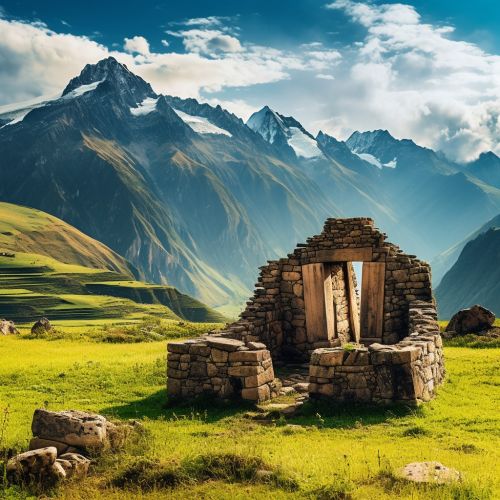History of Peru
Prehistoric Period
The history of Peru begins with the habitation of the territory by hunter-gatherers who arrived in approximately 15,000 BC. The oldest known complex society in Peru, the Norte Chico civilization, flourished along the coast of the Pacific Ocean between 3000 and 1800 BC. These early developments were followed by archaeological cultures such as Chavín, which emerged in the Andean highlands and spread throughout the country.


Inca Empire
The Inca Empire, which spanned from 1438 to 1533, was the largest empire in pre-Columbian America. The administrative, political, and military center of the empire was located in Cusco. The Inca civilization arose from the highlands of Peru sometime in the early 13th century. Its last stronghold was conquered by the Spanish in 1572.
Spanish Conquest
Spanish conquistadors led by Francisco Pizarro explored south from Panama, reaching Inca territory by 1526. It was clear that they had reached a wealthy land with prospects of great treasure, and after another expedition in 1529, Pizarro traveled to Spain and received royal approval to conquer the region and become its viceroy. The conquest was protracted and brutal; in 1532, the Spaniards executed the last Inca emperor, Atahualpa, and established a Spanish colony, the Viceroyalty of Peru, in 1542.
Colonial Period
During the colonial period, Peru was the most important of Spain's colonies in terms of gold and silver production. The colony's economy was based on exploitation of the land and native labor. The Spanish introduced new crops and livestock, which were adopted by the natives. The city of Lima became the capital of the Viceroyalty and the main economic hub of the colony.
Independence
Peru declared its independence from Spain on July 28, 1821, but the Spanish resisted the independence forces until 1824. The country's independence was definitively consolidated in the Battle of Ayacucho in December 1824, where the Spanish Army was defeated.
Republic of Peru
After independence, Peru experienced periods of political instability and fiscal crisis. The country's boundaries were not clearly defined, leading to disputes with neighboring countries. Despite these challenges, the country developed an economy based on the extraction of natural resources.
Modern Peru
In the 20th century, Peru experienced significant social and economic changes. The country underwent a process of industrialization and urbanization, and improvements were made in areas such as education and healthcare. However, the country also faced challenges such as political instability, economic crises, and social conflicts.
